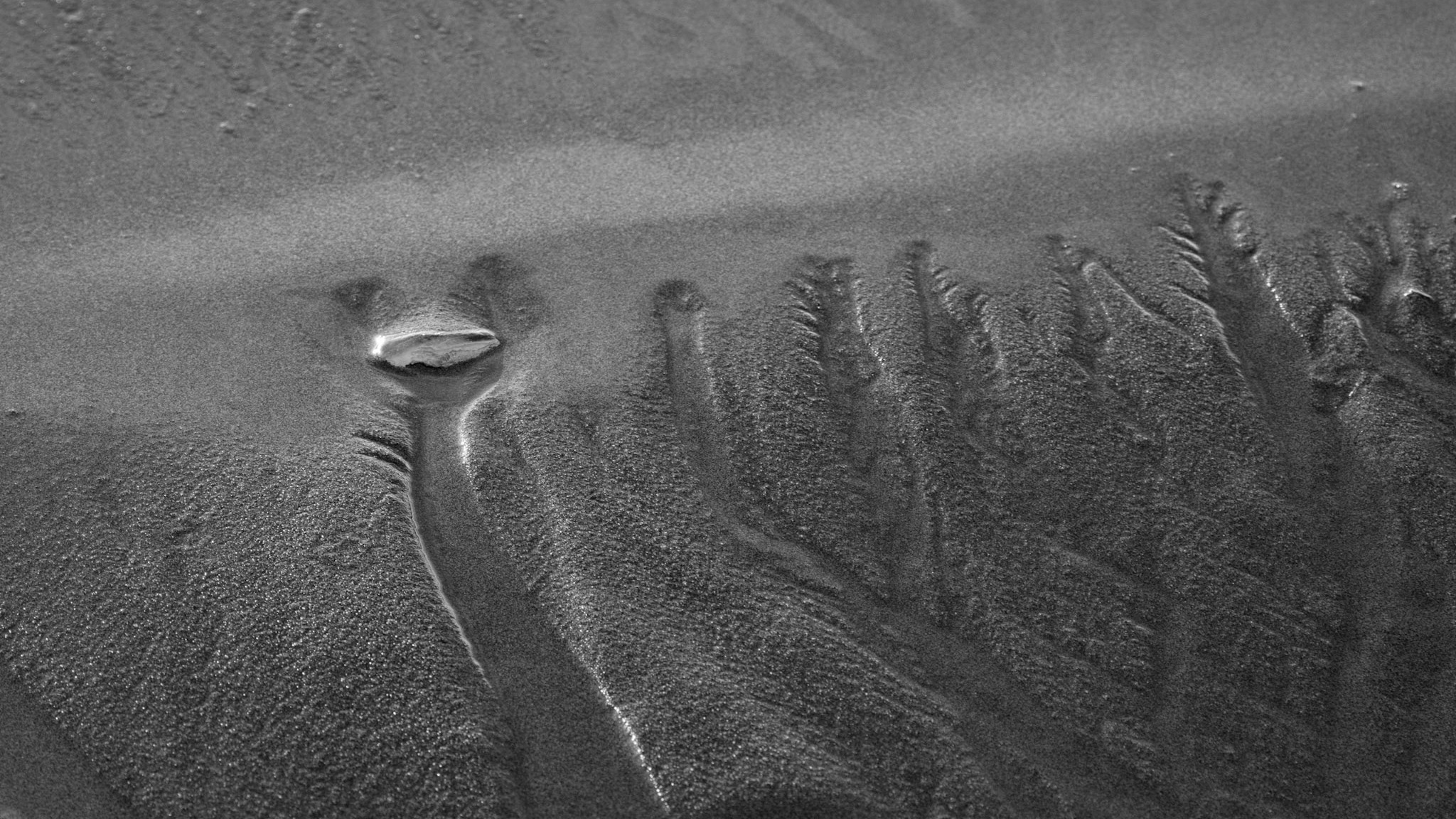
American sycamores grow in the gravely soil alongside Fall Creek. Ithaca Falls is visible in the background. It once provided the water-power for several small manufacturing industries.

The water of the creek laps at the roots of the sycamore. The trees have evolved claw-like roots that help anchor them in surging water.

Tree roots that resemble dragon claws help stabilize a sycamore growing near the base of the waterfall.

The creek often rises after a rain and spreads beyond its normal boundaries. This twin-trunked tree is completely surrounded by water.

The trees closest to the falls are partially submerged most of the year. It seems almost impossible that they can survive in this treacherous location.

The sycamores have evolved powers of resilience equal to the assaults of nature. Their roots are able to grow over larger rocks and slabs of shale seemingly as easily as slime-mold grows along rotting logs. This helps anchor the trees.

A pair of flat stones are wedged into the trunk of a sycamore. The tree grows around the stones within the course of several seasons, appearing to cradle them.

Sycamores have evolved the ability to heal wounds rapidly and in doing so often embed larger stones within living tree-flesh. On closer inspection, the tree can be seen growing into an intimate embrace with the stone.

Stones plucked from the creek and wedged between tree limbs provide evidence of the extent and fury of the floodwaters of the previous spring. For this to have occurred, this tree must have been submerged in over five feet of turbulent water.

After only a few hours of rain during the previous night, the turbulent water of Fall Creek flows with speed and energy toward Cayuga Lake.

Stilt-like trees are created when the creek strips the gravely soil from underneath the roots. This is another way that other native trees of the flood-plain have adapted.

Sycamores produce a mesh of feeder roots that continuously grow towards the edge of the creek. After the creek has subsided, newly exposed roots, stripped of protecting soil and looking like the coarse fur of some supernatural beast, begin to dry out in the air.

















